The New DTC Channel Is…A Vending Machine (From Advil to Plan B)

I’m off to Florence, Italy, soon, where about 10 years ago I happened upon a vending machine sited outside of a pharmacy just a few blocks from the Duomo — the Farmacia Della Condotta. And in that vending machine, accessible at all hours (especially overnight when the pharmacy was closed), were all manners of direct-to-consumer self-care goods….including condoms. What distinguished this from other vending machines that might have channeled condoms at the time was that those tended to be located in men’s rooms in, say, bars — not openly on a city street. You can see the Italian vending machine
Americans Who Perceive Negative Medical Treatment Due to Weight, Insurance Status, and Identity Metrics – YouGov Insights
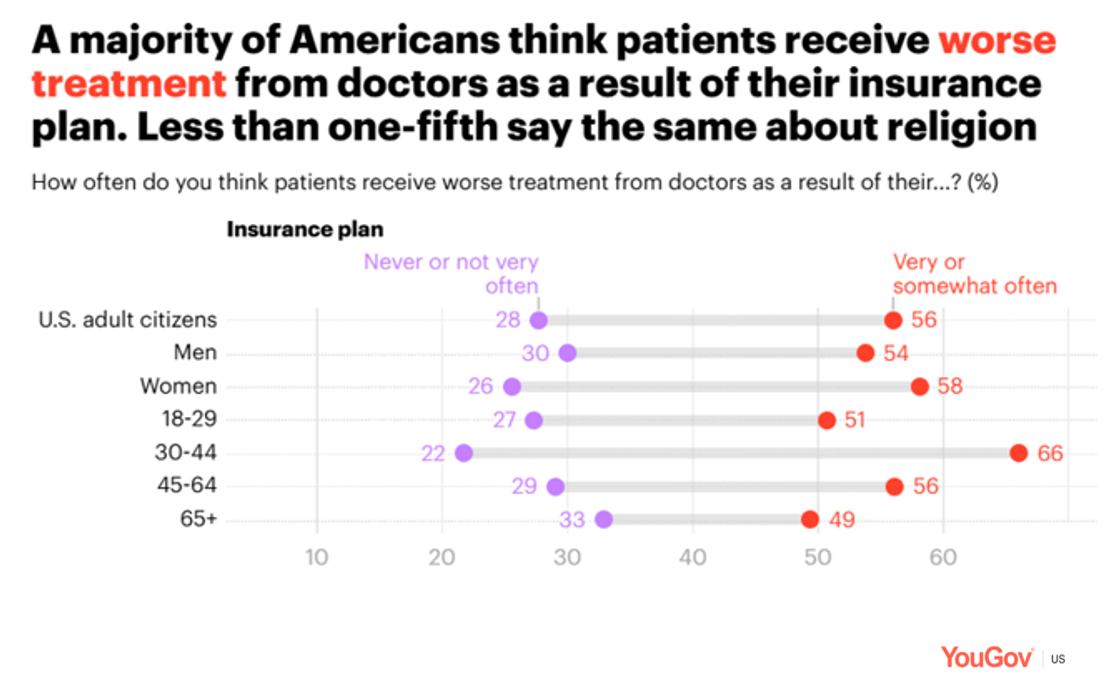
Millions of Americans believe they have been treated negatively by a physician due to their weight, insurance status, physical appearance and/or state of mental health, according to a YouGov poll published August 6, 2024. To gauge U.S. health citizens’ perceptions of fair and unfair treatment in the health care system, YouGov conducted this research among 1,200 U.S. adults 18 and over online in late June 2024. The first bar chart arrays various identity characteristics describing patients: we see that weight is by far the top characteristic putting the person at-risk for being
Women’s Health Outcomes in the U.S.: Spending More, Getting (Way) Less – 4 Charts from The Commonwealth Fund
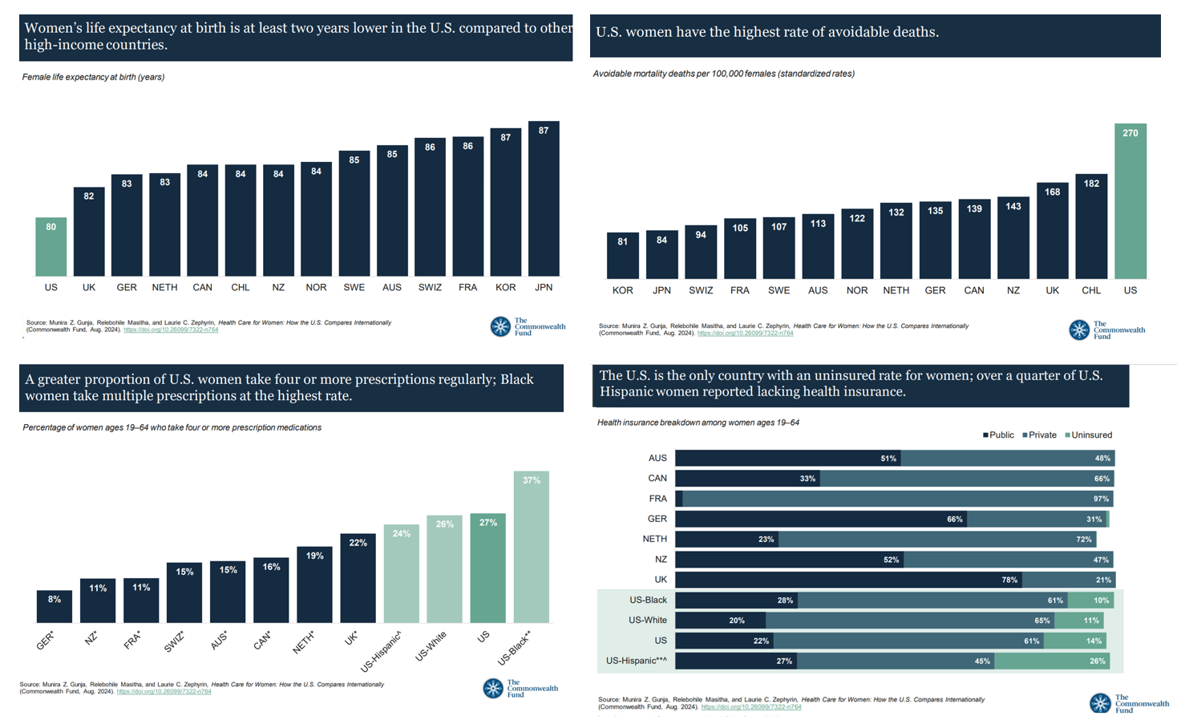
Women in the U.S. have lower life expectancy, greater risks of heart disease, and more likely to face medical bills and self-rationing due to costs, we learn in the latest look into Health Care for Women: How the U.S. Compares Internationally from The Commonwealth Fund. The Fund identified four key conclusions in this global study: Mortality, shown in the first chart which illustrates women in the U.S. having the lowest life expectancy of 80 years versus women in other high-income countries; Health status, with women in the U.S. more likely to consume multiple prescription
The Health Care Costs for Someone Retiring in 2024 in the U.S. Will Reach $165,000 – Fidelity’s 23rd Annual Update
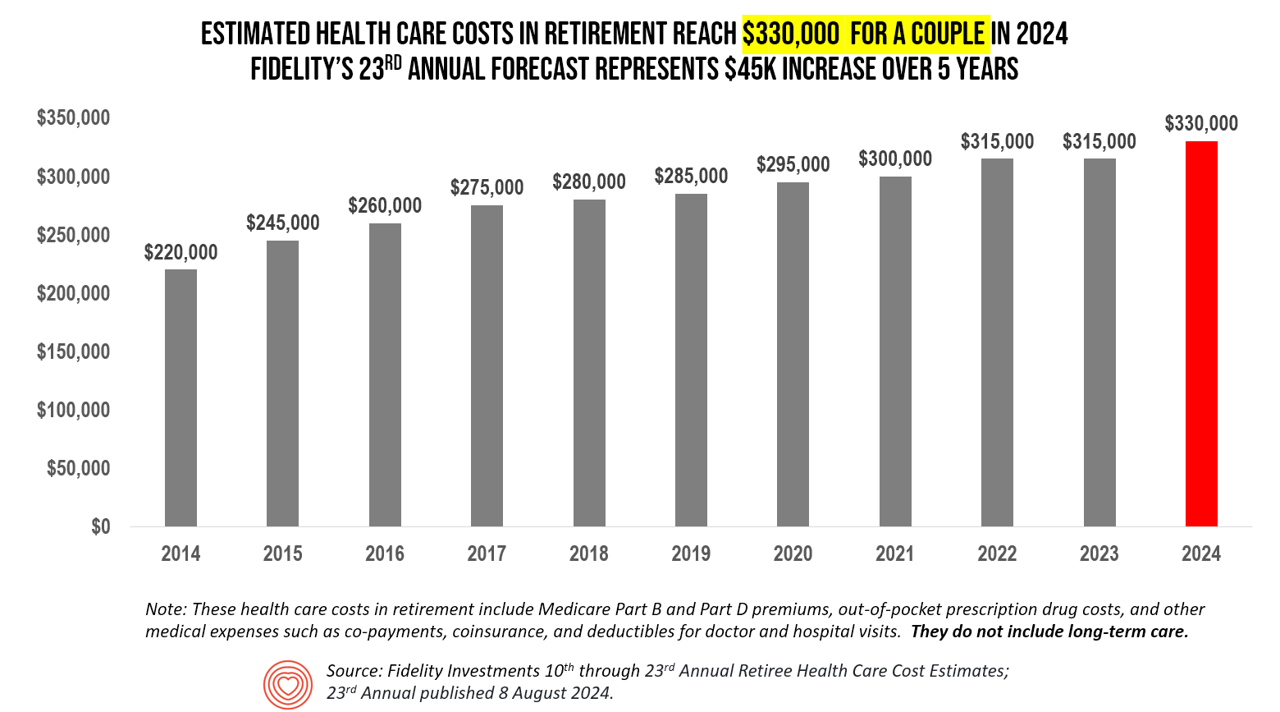
The average person in the U.S. retiring in 2024 will need to bank $165,000 to pay for health care costs in retirement — a sum that does not include long-term care, Fidelity Investments advises us in the 23rd annual look at this always-impactful (and sobering) forecast. I’ve covered this study every year since 2011 here in Health Populi, continuing to add to this bar chart; in the interest of space and legibility, I started this year’s version of the chart at 2014, when the cost for a couple was gauged at $220K. Fidelity began
What the “Vibe-Cession” Means for Health Care in the U.S. – Spending is Personal
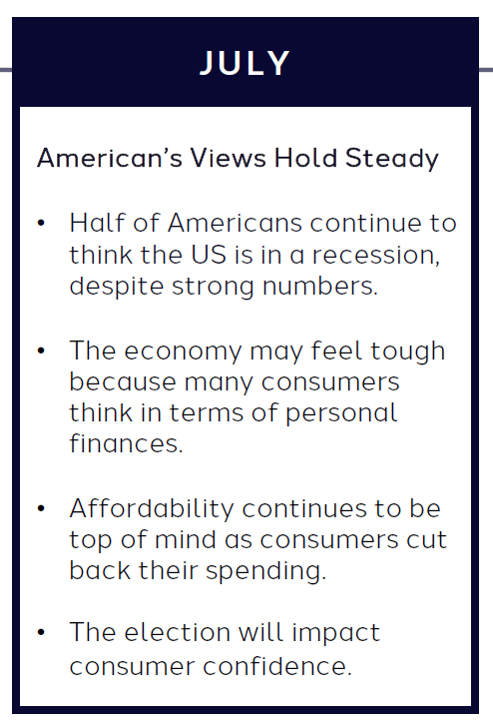
People living in the U.S. continue to feel a “vibe-cession” malaise, based on the American Mindset July 2024 update from Dentsu’s Consumer Navigator research. Notwithstanding generally good news about the American macroeconomy — in terms of growth, downward ticking inflation, and expected interest rate relief come September from the Federal Reserve — one in two Americans still thinks the country is in a recession. And this context is important for consumer’s personal spending on health care, fitness, and wellness, because, as Dentsu puts it, “consumers think in terms of personal finances.” As
Zocdoc Learns What Patients Want: Primary Care Access ASAP, and the Role of Women as Chief Health Officers
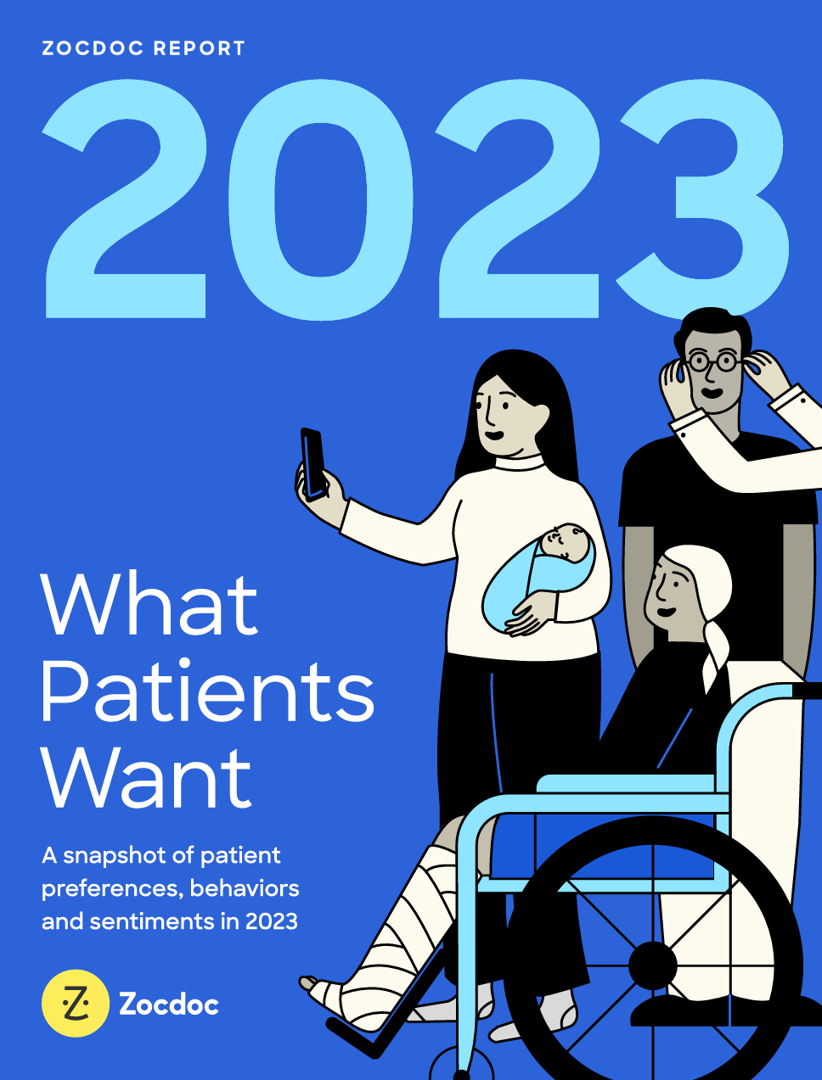
The ability to book an doctor’s appointment ASAP, care available in-person and via telehealth, and control over my care — these are key factors Zocdoc explains in the company’s What Patients Want report published this week. Zocdoc learned the top reasons consumers booked medical appointments were for primary care, such as getting an annual physical or women’s preventive care services (e.g., pap smear, gyn exam), dermatology, and mental health issues. The top specialists booked were, consequently, primary care doctors, dermatologists, OB-GYNs, psychiatrists and psychologists, and dentists and vision providers. In this first research study Zocdoc has conducted on
Effective Health Spending Is An Investment, Not a Cost: the Bottom-Line from OECD Health at a Glance 2021
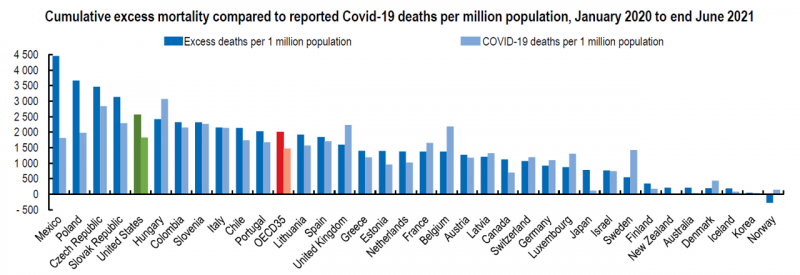
“The pandemic has shown that effective health spending is an investment, not a cost to be contained: stronger, more resilient health systems protect both populations and economies,” the OECD states in the first paragraph of the organization’s perennially-updated report, Health at a Glance 2021. This version of the global report incorporates public health data from the “OECD35,” 35 nations from “A” to “U” (Australia to United States) quantifying excess deaths experienced during the COVID-19 pandemic, the obesity epidemic, mental and behavioral health burdens, and health care spending, among many other metrics. The first chart illustrates that calculation of excess deaths,
Crossing the Pond by Plane in the Age of Corona – My View From the Hygienic Skies and on the Ground in Belgium

Years before we knew how to spell “coronavirus,” I gained Italian citizenship while retaining my U.S. citizenship. My family’s plan was to, soon thereafter, split time for work and life between the U.S. and the E.U. Then, COVID-19 emerged as a pandemic the world over, and the move to Brussels in January 2020 was quite short-lived. Now, the plan is in play and I’m writing this post from our home in Brussels, Belgium. Why Brussels? Among many smart reasons, the city is welcoming, our farm-to-table food style is doable, the walkability is brilliant, and the transportation options are accessible to
Chewing on Raley’s Social Impact Report: Re-Imagining the Future of Food, Health and Community
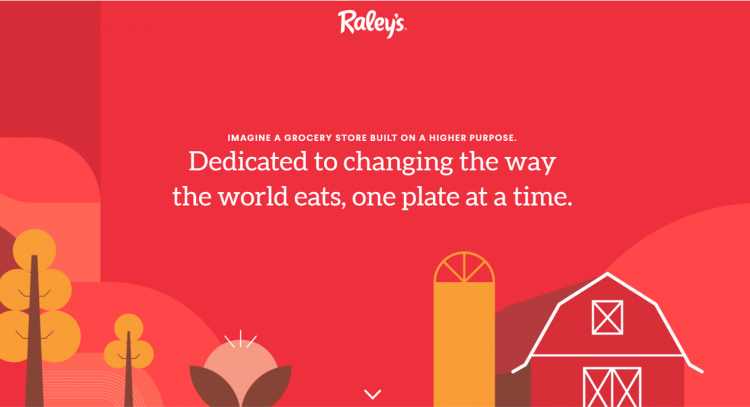
This week, Raley’s, a grocery chain based in California, released its first-ever Raley’s 2020 Impact Report “Imagine a grocery store with a higher purpose,” the landing page for the company’s social impact resources calls us to do. In today’s post, I explore — or chew on, if you will — Raley’s Report through the lens of health, wellness, and social factors key to citizens living full and resilient lives. The Raley manifesto is especially timely with the medical, emotional, and social impacts of COVID-19 not yet in our collective rear-view mirror. The first Raley’s Market opened in Placerville, CA in
Digital Inclusion Is A Social Determinant of Health – Learning Good Things from the NHS
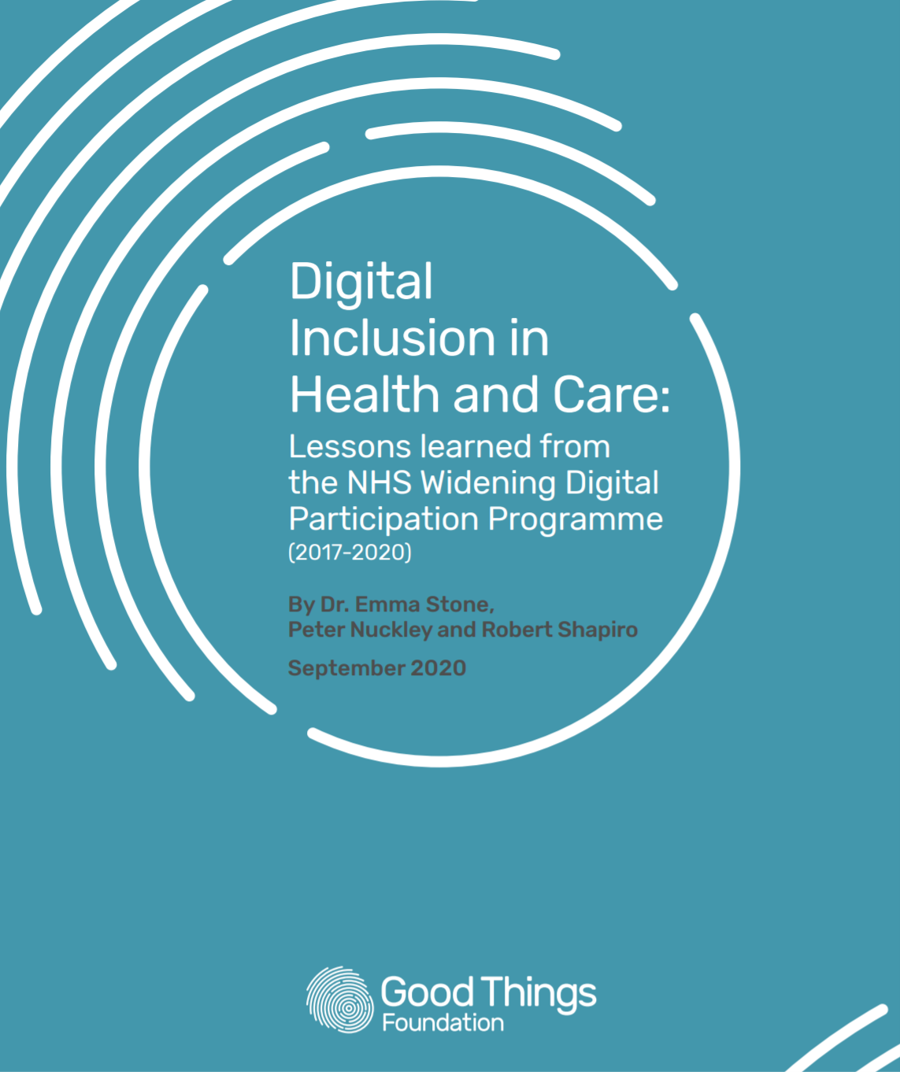
“Digital,” write large, has been a lifeline during lockdown for those with the access, skills, and confidence to benefit from connecting. “But too many [people] are still locked out,” the Good Things Foundation explains in Digital Inclusion in Health and Care: Lessons learned from the NHS Widening Digital Participation Programme. This report details how the National Health Service in the UK — the largest health care delivery system and single payor in the world — developed a model of “digital health hubs” to help address widening health inequities made worse through digital divides in the United Kingdom. There are many
Cancer in the Age of COVID: Delayed Care May Reverse Survival Gains Particular Among Black People
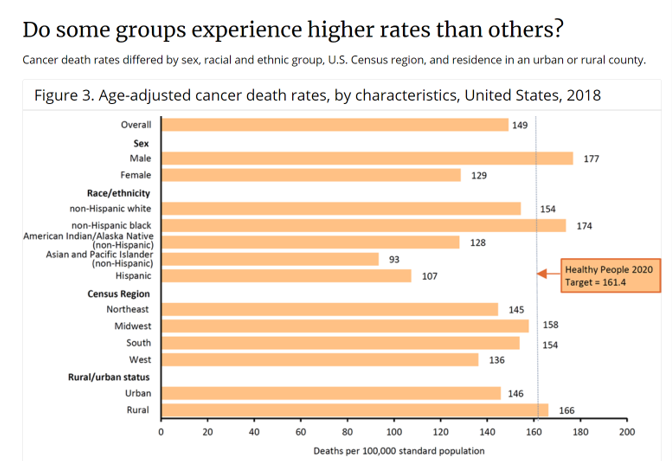
There was great news published last week in An Update on Cancer Deaths in the United States from the Centers for Disease Control (CDC): cancer mortality rates have declined by 26% over 20 years, between 1999 to 2018. The drop in deaths from cancer in America was indeed positive during the current public health COVID-19 pandemic, a public health data story easily lost in an overwhelmingly tough week in the U.S.: still embattled with the coronavirus, the nation also continues to shed jobs with the growing threat of an economic recession and financial ill health for mainstream consumers, and the
Art Therapy in the COVID-19 Era: Inspirations Abound from Munch to Dutch Masters and Toilet Tissue
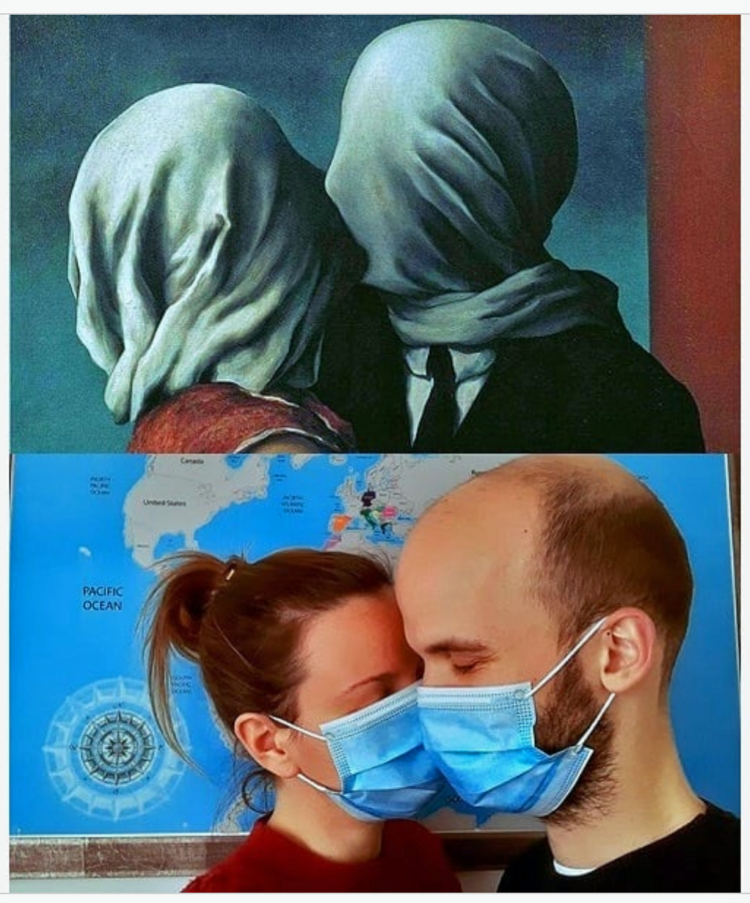
Florence Nightingale, the founder of modern nursing, said, “Variety of form and brilliancy of color in the object presented to patients are an actual means of recovery.” We all need some #ArtTherapy in this #StayHome COVID-19 era, #AloneTogether to #FlattenTheCurve. Yes, I’ve been spending too much time connecting on social media. Can you tell I’m in dire need of some art therapy? #Truth. The coronavirus pandemic, like all desperate times, is inspiring amazing creativity across all media and channels. Today I’m obsessed with several art projects that delight me. My fall-outta-my-seat art therapy moment this week came from the Getty
The 2020 Health Populi TrendCast – HealthConsuming, TechLash, and Public Health Goes Private
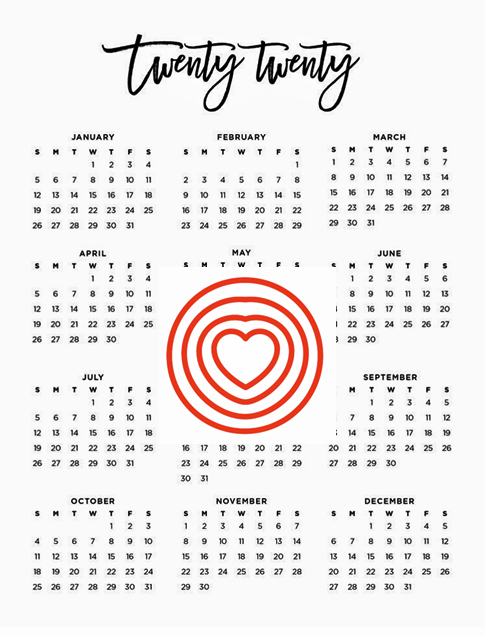
“Having 20/20 vision does not necessarily mean you have perfect vision. 20/20 vision only indicates the sharpness or clarity of vision at a distance,” according to the American Optometric Association. An important vision skill, the AOA tells us, is “peripheral awareness or side vision” which contributes to overall visual acuity. So it is with scenario planning in health care, a key work-flow this time of the year for me with my clients spanning the health/care ecosystem from providers to payors to Big Food, electronics and tech, and financial services. In the fourth quarter each year, I’m typically occupied with scenario
Most People Want Technology to Play a Bigger Role in Their Health Care, ResMed Finds
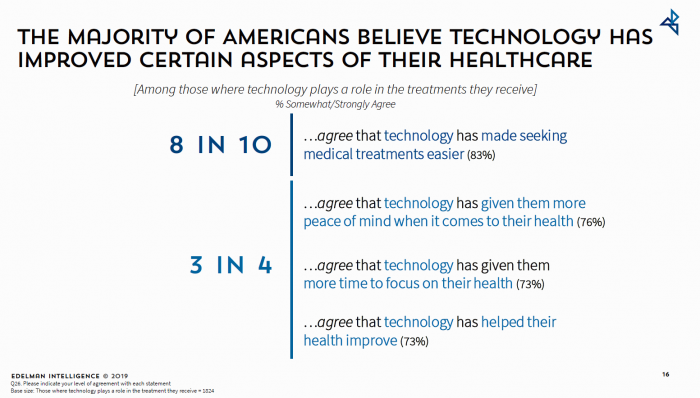
Americans face high costs and hassle factors in health care. But more people are taking care into their own hands, and welcome a growing role for technology to play in enabling self-care, supporting prevention, and improving treatment of diagnosed conditions, according to The Future of Connected Health, a consumer survey from ResMed. For this research, ResMed interviewed 3,001 U.S. adults in June 2019, asking people to share perspectives on their health care experiences, the role of technology in healthcare, and devices they’d use to manage their care. Most Americans feel it should be easier to find the medical care that
Large Employers’ Focus on Prescription Drugs: Costs, Coupons and Communication
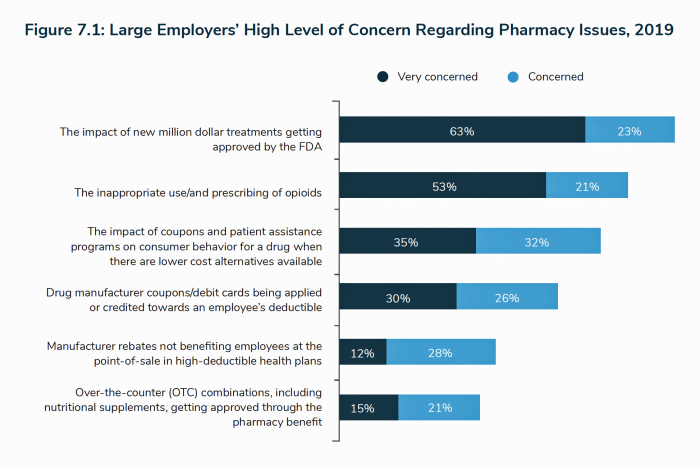
As large employers’ annual health care costs for an employee are expected to exceed $15,000 in 2020, companies are focusing in on managing the pharmacy line-item, we learn from the 2020 Large Employers’ Health Care Strategy and Plan Design Survey from the National Business Group on Health (NBGH). I covered large employers’ perspectives and future plans to deal with health care services for workers in 2020 in Health Populi here earlier this week. In this post, I’ll dive deep into the study’s Section VII on Pharmacy Costs and Strategies. Employers’ most daunting challenge and uncertainty when it comes to dealing with
Americans’ Financial Anxiety Ties to Personal Cash Flow and Health Care

“The Dow Jones Industrial Average was on the brink of claiming a thousand-point milestone for the first time since January 2018, ending the longest period without crossing such a psychologically significant level since the blue-chip benchmark crossed the 19,000 threshold three weeks after Donald Trump was elected president in November 2016,” Mark DeCambre of MarketWatch wrote yesterday morning. He noted that President Trump, “tweeted a simple call-out to the intraday record: ‘Dow just hit 27,000 for first time EVER!'” clipped here from Twitter. Indeed, the U.S. macro-economy has nearly full employment and the stock market hit a high mark this
Insured, Sick and Broke – The Latest on the State of U.S. Health-Insured Consumers’ Financial Health

This is what rationing health care looks like in America: one in two people in families dealing with a chronic health condition have difficulty affording paying medical bills before meeting a deductible, unexpected medical bills, co-payments for prescription drugs, co-payments for physician visits, and/or their monthly health insurance premium. That financial toxicity is felt among people who were insured through the workplace in late 2018, based on the Kaiser Family Foundation (KFF)/LA Times Survey of Adults With Employer-Sponsored Insurance, published last week. Some 51% of people told KFF that they or a family member had skipped or postponed getting health
Patients Become Healthcare Payors, Now Consumers – HealthConsuming Explains, Part 1
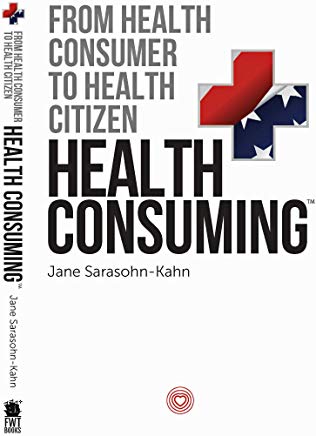
We Are All Health Consumers Now. That’s the title of the first chapter of my new book, HealthConsuming: From Health Consumer to Health Citizen. I start this chapter quoting President Ronald Reagan in 1983, who recognized that health care costs were growing at three times the rate of inflation during the first term of his Presidency. It’s déjà vu in health care all over again, but 35 years later, it’s the patient now facing sticker-shock with first dollar payments in high-deductible health plans, six-figure prices on specialty drugs to treat cancers, and a poor return-on-investment for personal health spending. Thus
On World Food Day 2018, Imagine A Chef Cooking for Patients

Today, October 16, is World Food Day. At Health Populi and THINK-Health, we celebrate the birthday of the Food and Agriculture Organization (FAO), allied with the United Nations. FAO was founded to address malnutrition and bolster a sustainable, healthy food supply for people. World Food Day 2018 has four objectives: Don’t waste food Produce more food with fewer resources Advocate for #ZeroHunger by 2030, and, Adopt a healthier, more sustainable diet. All four of these pillars play a role in health, but I’ll focus today on the fourth: the role of food as a major social determinant of health. Hunger
Patients and “Their” Medical Records: Crossing the Chasm
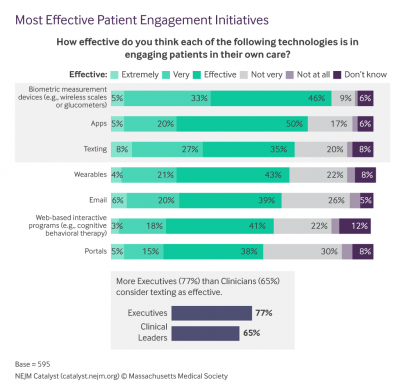
Most physician practices and hospitals in the U.S. have installed electronic health records (EHRs). But in a classic Field of Dreams scenario, we have made patients’ medical records digital, but people aren’t asking for them or accessing them en masse. “How do we make it easier for patients to request and manage their own data?” asks a report from the Office of the National Coordinator of Health IT (ONC), Improving the Health Records Request Process for Patients – Highlights from User Experience Research. The ONC has been responsible for implementing the HITECH Act’s provisions, ensuring that health care providers have met Meaningful
U.S. Consumers Expect, But Don’t See, Innovation From the Health & Wellness Industry
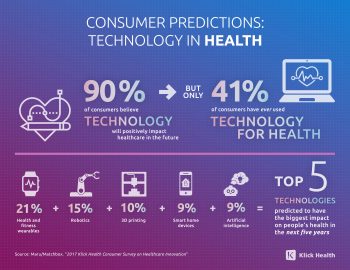
U.S. consumers consider Consumer Electronics to be the most innovative industry they know. But people believe that Health & Wellness should be the most innovative sector in the economy. Welcome to the 2017 Klick Health Consumer Survey, which focuses on health innovation in the context of peoples’ hopes for technology to improve health and healthcare. 1 in 2 people say that technology has had a positive impact on their health and wellness, skewing slightly more toward younger people (although 45% of people 55 years of age and older agree that tech positively contributes to health. 41% of consumers say they’ve
Health Care Costs, Not the ACA, Rank #1 in Americans’ Minds As President Trump Assumes the Presidency
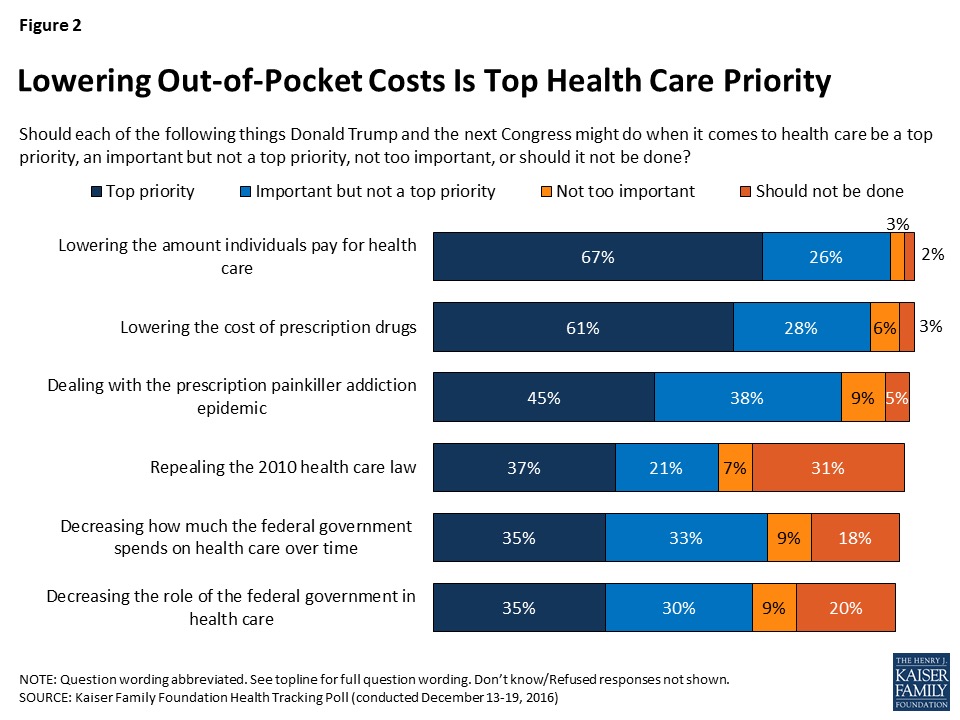
More Americans are worried about their out-of-pocket health care costs than they are about repealing the Affordable Care Act (ACA), according to the Kaiser Family Foundation (KFF) Health Tracking Poll published 6th January 2017, the first KFF poll for the new year. Cost worries fall into two buckets of concerns: the cost of health care, and the cost of prescription drugs. Managing the opioid epidemic falls in third place after health care costs. Repealing the Affordable Care Act? It’s #4 on Americans’ health care priorities as of mid-December 2016, followed by shrinking the Federal’s government’s role in and spending on
Consumers Want to Cross the Digital Health Chasm With Providers
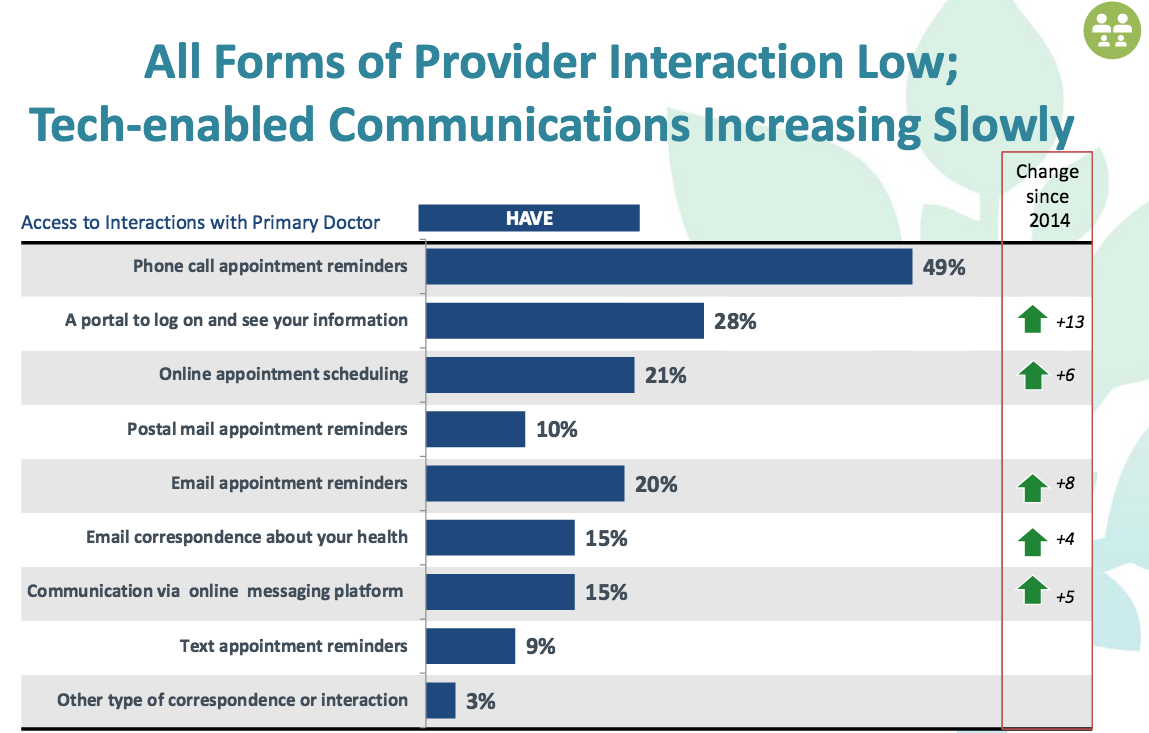
This post was written to commemorate National Health IT Week, taking place 26-30 September 2016. This also coincides with the 10th annual meet-up of the Health 2.0 Conference, of which I’ve been a part since the group’s inception. My focus in both this post and at Health 2.0 is patient/person-powered healthcare, and how digital technologies can help people self-empower, be more health-informed, engage in health and healthcare, and better manage health finances and financial wellness.
Health is where we live, work, and shop…at Walgreens
Alex Gourley, President of The Walgreen Company, addressed the capacity crowd at HIMSS15 in Chicago on 13th April 2015, saying his company’s goal is to “make good health easier.” Remember that HIMSS is the “Health Information and Management Systems Society” — in short, the mammoth health IT conference that this year has attracted over 41,000 health computerfolk from around the world. So what’s a nice pharmacy like you, Walgreens, doing in a Place like McCormick amidst 1,200+ health/tech vendors? If you believe that health is a product of lifstyle behaviors at least as much as health “care” services (what our
Building the health ecosystem: new bedfellows coming together
2015 is already becoming a year where bedfellows of different stripes are joining together to build a health care ecosystem well beyond hospitals, doctors and health plans. Announcements launched last week at the 2015 Consumer Electronics Show in Las Vegas, and coming out this week at the J.P. Morgan Conference in San Francisco, the first two weeks of 2015 reveal that new entrants and legacy health stakeholders are crossing corporate and cultural chasms to (try and) solve challenges that prevent us from getting to that Holy Grail of The Triple Aim: improving health care outcomes, driving down per capita costs,
The battle of the bands, digital health style – live from #CEWeek in NYC
There’s a growing number of wearable digital health devices on the market, and more will appear at the 2015 Consumer Electronics Show in Las Vegas. Four new such products competed live today at CE Week’s Battle of the Bands, an event launched by Living in Digital Times. The competitors included GoQii, Healbe, Skulpt, and Wellograph, Wellograph calls itself “the world’s first wellness watch.” Made of sapphire crystal, the watch has a sleek design, targeting a working professional audience who wants a view on health throughout the day. The watch has an Integrated heart rate sensor, taking readings from the wrist for pulse,
Self-service health – how consumers can help solve the primary care shortage
Self-service – people DIYing health care — can help solve the primary care shortage in America, based on the findings of 23 studies published this week. If health information technologies (health IT) were “fully implemented” in 30% of doctors’ offices, demand for physicians would fall by 4 to 9%, according to The Impact of Health Information Technology and e-Health On the Future Demand for Physician Services, published in the November 2013 issue of Health Affairs. Weiner, Yeh and Blumenthal did a meta-analysis of the literature on health IT and its potential to improve productivity and extend physician services and found
Living paycheck to paycheck: what it means for health
While 50% of Americans feel they have a sound financial position, the other half is living paycheck to paycheck. 8% say they can’t even pay for essentials. The second annual Allstate “Life Tracks” Poll finds American adults split between have’s and have not’s, with even the “have’s” feeling less than financially literate. There is an equal split between people who feel they’re in an “excellent” or “good” financial position compared with those who feel they’re in financially “fair” or “poor” shape. Men feel more financially secure than women; 3 in 4 single parents feel less well-off compared to the average
Wired health: living by numbers – a review of the event
Wired magazine, longtime evangelist for all-things-tech, has played a growing role in serving up health-tech content over the past several years, especially through the work of Thomas Goetz. This month, Wired featured an informative section on living by numbers — the theme of a new Wired conference held 15-16 October 2012 in New York City. This feels like the week of digital health on the east coast of the U.S.: several major meetings have convened that highlight the role of technology — especially, the Internet, mobile platforms, and Big Data — on health. Among the meetings were the NYeC Digital Health conference, Digital
More primary care office hours, lower health care costs
It’s become evident that more health care does not often lead to better health: Shannon Brownlee’s seminal book, Overtreated, uncovered the negative relationship between more health care and worse outcomes. However, when it comes to accessing primary care, more may be a good thing. In Extended Office Hours and Health Care Expenditures: A National Study, published this week in the Annals of Family Medicine, researchers found that offering longer office hours, into evenings and weekends, leads to lower total health care expenditures for patients than practices without extended hours. Extended hours are also associated with lower prescription drug and office visit
Employees will bear more health costs to 2017 – certainty in an uncertain future
Amidst uncertainties and wild cards about health care’s future in the U.S., there’s one certainty forecasters and marketers should incorporate into their scenarios: consumers will bear more costs and more responsibility for decision making. The 2012 Deloitte Survey of U.S. Employers finds them, mostly, planning to subsidize health benefits for workers over the next few years, while placing greater financial and clinical burdens on the insured and moving more quickly toward high-deductible health plans and consumer-directed plans. In addition, wellness, prevention and targeted population health programs will be adopted by most employers staying in the health care game, shown in
Health consumers’ digital adoption gets more social, approaching nearly half of U.S. consumers
Nearly 1 in 2 U.S. adults now uses social media in health, according to Manhattan Research’s latest look into Cybercitizens, fielded in Q311. That 45% of U.S. health consumers use social media in health is a significantly higher percentage than recent studies fielded by PwC and Deloitte, which have found about 1 in 3 consumers using social media for health. Manhattan Research defines social media use in health as having created or consumed health-related user-generated content on blogs, social networks, health ratings websites, online health communities and message boards, or patient testimonials. Key findings are that, 14% of health-social media folks are
The Proustian joy of a well-honed walking playlist: how music propels and sustains joyful exercise
In rounding out what’s turned into Wellness Week on Health Populi, I’d like to share one last (for now) learning from 2011 – My Year of Health: what I’ll call the “Proustian joy” of a personalized iTunes playlist for daily walks. In waking very early — in the dark this winter season — for my daily walk, music plays a key role in propelling my energy and waking up my body. After a few months of this regime, it’s become routine, but not a bore: instead, by refreshing my playlist, and learning about how to best organize it for optimal
Robert Reich connects the dots between the macroeconomy, angst, politics and health care costs
“I’m not a class warrior. I’m a class worrier,” Robert Reich told a standing-room only crowd of thousands of health IT geeks as he delivered the first keynote address of the annual meeting of HIMSS, the Healthcare Information Management and Systems Society. This year’s crowd will have reached about 31,000 people interested in health information technology’s transformative role in health care. The 31K represents an 18% increase in attendance from last year’s crowd. The HIMSS economy is strong. Robert Reich warns, however, that the U.S. macroeconomy is far from healthy…and health care costs will be a long-term threat to the
As health care demand is constrained, who will pay for medical innovations? Reflections on Moody’s analysis
“Employers and health insurers, through benefit design and medical management, are now playing a larger role in curbing use of healthcare services….spurring a more permanent cultural shift in consumer behavior,” Moody’s writes in a special comment dated February 16, 2011. “This will continue to constrain healthcare demand even as the economy recovers.” The chart illustrates one of the main reasons for the so-called “constrained healthcare demand:” increasing costs on health consumers. Look at the slope of the line on average out-of-pocket maximum costs for an employee receiving health insurance at work: the raw number grew from $2,742 in 2008 to
Personal health records: will doctors connect?
What doctors are most likely to use patients’ personal electronic health records? Fewer than 1 in 2 are willing to. Those who most likely would include Hispanic physicians, doctors who practice in rural areas, those employed in hospitals, and surgeons. As part of the HITECH Act included in the American Recovery and Reinvestment Act (ARRA) 0f 2009, U.S. physicians have the opportunity to receive a portion of the $20.8 billion carved out as incentive payments to those who adopt and “meaningfully use” electronic health records (EHRs). Many EHRs include portals which allow patients to access a slice of their personal health information.
Success factor for mobile health: mash up the development team
With mobile health (“mhealth,” for short) at the top of the Gartner Hype Cycle, and the annual HIMSS meeting gearing up for next week’s countless announcements about mHealth solutions for health providers and patients, how can someone get a true read on the intersection of mobile and health? What’s practical, what’s real, and where are ‘we’ in mobile health in February 2011? If you can’t be in the room with me on the morning of Thursday 17 February 2011 in the small group meeting at unNiched in New York City, let me share with you one lesson learned just last week at the
Love, sex and what I tweeted
EURO RSCG has polled 1,000 online Americans’ views on romance through the lens of digital media, publishing results in a paper, Love (and Sex) in the Age of Social Media. This ‘digital love’ survey was conducted in January 2011. [It’s interesting to note that EURO RSCG won the business for the Durex condom line in November 2010.] In its introduction, EURO RSCG suggests that, “the Internet is the most powerful erogenous zone that the world has ever known.” There are five aspects to digital love, based on these findings: 1. Observing love online. As more people do more daily activities online like banking,
Meeker & Murphy on Mobile – through the lens of health
We technology market data junkies look to several thought leaders throughout the year for updates on their forecasts: one of these, for me, is Mary Meeker. Now with KPCB (who some of you know as Kleiner Perkins Caulfield & Myers, the Silicon Valley venture capital company), Meeker has surveyed the morphing field of mobile and finalized her snapshot in Top Mobile Internet Trends, along with her colleague Matt Murphy. Meeker’s Top 10 (drum roll, please) are that: 1. Mobile platforms have reached c4itical mass 2. Mobile is global 3. Social networking is accelerating growth of mobile 4. Time shifting is driving mobile use
1 in 10 jobs in the U.S. is in health care – an all-time high that will go even higher
In February 2011, 1 in 10 jobs in the U.S. is in health care employment; nearly 14 million people in the U.S. work in health care employment, with health care representing 10.7% of all jobs in America. The growth rate of health care jobs rose 1.2 percentage points since the recession kicked in late 2007. Since the start of the recession, health employment grew 6.3%; the number of non-health jobs fell by 6.8%. The chart starkly illustrates this story. Altarum Institute has crunched the health job numbers from the Bureau of Labor Statistics (BLS) and published their analysis in Health Sector Economic Indicators, published
Employees look to their employers for health information – new findings from NBGH
Employers spend about $10,000 each year per active employee for health care. In return, they’re looking for value for their money in the form of cost-effective, efficient health care that yields optimal outcomes for insured workers and their families. The ROI isn’t as great as employers as investors in worker health would like to see. As a result, companies are looking to comparative effectiveness research as a tool to help make better health spending decisions — for the companies themselves and for employees. The National Business Group on Health (NBGH) surveyed 1,538 employees at large employers to ascertain workers’ views on health
Women seek healthier habits in the post-recession economy
Women’s #1 priority is health and wellness. Wellness means taking care of herself, based on a survey of women by Saatchi Wellness. Women are coming out of the recession with the modus operandi of a “me-covery,” according to Saatchi Wellness’s read on women’s attitudes about the economy’s impact on their wellbeing and health priorities among 800 women polled online in August 2010. The 5 elements of the “me-covery” for women are: To eat right. This doesn’t mean “diet;” it’s striking a balance and buying healthier, and more organic, food. People most negatively impacted by the economy are buying less fast food. To
It’s still the economy for U.S. voters in November, with health reform a distant second
There’s more confusion among U.S. voters than ever about what health reform, the Accountable Care Act (ACA), means. The September 2010 Kaiser Health Tracking Poll reveals an electorate that’s not only confused, but quite split in their support — with those who oppose the law even stronger against it than the pro’s support it. The Kaiser Family Foundation (KFF) survey found that the percentage of ACA proponents actually increased by 4 percentage points between August and September, from 45% to 49%. 41% of registered voters are “unfavorable,” and 10% still have no opinion about the law. When it comes to
Health and entertainment: kids like food with Dora, Scooby and Shrek
What do Dora the Explorer, Scooby-Doo and Shrek have in common? They’re persuading kids to eat less nutritious food, according to a study in the July 2010 Pediatrics journal (Volume 126. Number 1). A team from The Yale Rudd Center for Food Policy and Obesity studied children’s taste for food that’s sold in cartoon-character themed packages, versus products in plain packaging. The verdict? Kids think the cartoon-themed food tastes better. The study was done among 40 so-called “ethnically diverse” children 4-6 years old in New Haven, CT, preschools. Health Populi’s Hot Points: Since Vance Packard wrote the seminal book on advertising, The Hidden
The health supply chain will move closer to the patient
People responsible for managing the health care industry supply chain have always been concerned about regulations and compliance requirements that can negatively impact their ability to manage the materials, technologies, goods and services they need to fulfill their organizations’ medical missions and businesses. Now “health reform” joins regulation as a pain point in the supply chain. UPS, the logistics and transport company, has surveyed executives from pharma, biotech, medical and surgical device companies, to ascertain their current perspectives on the health care supply chain. The results of this study are in the report, UPS 2010 Pain in the (Supply) Chain
Parents demand ePediatrics services
1 in 2 parents is keen on going online with their kids’ pediatricians to refill prescriptions, get clinical advice, obtain lab results, and obtain immunization records. The National Poll on Children’s Health, conducted for the C.S. Mott Children’s Hospital at the University of Michigan, found that fewer than 10% of parents can currently go online for administrative tasks like scheduling an appointment or completing a form before going for a well-kid visit. But there’s pent-up demand for so-called ePediatrics, the poll discovered. The key obstacles to doctors engaging in ePediatrics, the survey researchers say, are doctors’ concerns about medical liability
Mobile Health a hot topic on Capitol Hill
Capitol Hill is keen to know more about telehealth and health care information technology. Today, I am participating in a roundtable discussion on mobile health as part of an event hosted by Qualcomm and the American Telemedicine Association. Why “mHealth” anyway? It’s because we’re a mobile society. As B.J. Fogg, the director of the Stanford Persuasive Technology Lab, wrote, “We don’t merely adopt cell phones; we marry them.” In our 24×7 lives, we’re project managing our entertainment, financial management, travel services, and shopping via mobile devices. Engaged health consumers ask, “why can’t I ‘DIY’ my health the way I manage other
Save the Children…and the Mothers
It’s good to be a kid in Norway, Australia, Iceland, Sweden, and Denmark. The worst country to be a kid on the planet is Afghanistan, which ranks lowest based on the Mothers’ Index Ratings in Save the Children’s State of the World’s Mothers 2010 report, the 11th annual version of this project. You might notice the United States hasn’t yet been mentioned. That’s because it’s not in the top 5 best places to be a woman or a kid; but the U.S. is also far, far from the worst nation in terms of childhood and maternal health metrics. The U.S. ranks
Health care confidence crisis worsens among Americans
Americans’ faith in their ability to obtain and pay for health care has eroded in 2010. Notwithstanding the fact that a health reform bill has passed and the nation’s macroeconomic measures appear to be picking up, people in the U.S. are losing confidence in their ability to access and pay for health care. The chart illustrates the downward trend in Americans’ perceived ability to access and pay for health care both in the past 3 months and in the next 3 months. Thomson Reuters bases the Consumer Healthcare Sentiment Index on looks back 3 months and ahead for 3 months.
The state of the States and health reform
The impact of health reform could be devastating to the budgets of states by 2014 — the year that Governors must kick in substantial additional expenses that will cover the uninsured who are absorbed into existing health care programs. The Patient Protection and Affordable Care Act of 2010 builds on existing state health programs (read: Medicaid and CHIP for children) to provide coverage for uninsured Americans in 2014. Moody’s, the credit rating agency, has issued a report, Healthcare Reform Expected to Create Longer Term Financial Pressure for States, which finds that the states with largest gains in Medicaid enrollment will have the most
Administrative simplification as health reform
Physicians spend 12% of their net revenue to cover administrative waste in the course of practicing medicine over a year. Simplifying payment and billing through a universal form would save doctors in the U.S. $7 billion (yes, “billion” with a “b”). This sad story of waste is detailed in a Web First article on the Health Affairs website titled, Saving Billions of Dollars – And Physicians’ Time — By Streamlining Billing Practices. The research comes from a team from Massachusetts General Hospital, and includes the institution’s CFO — to whom $7 billion is surely ‘real’ money. The authors point out that
The cost of cancer care – too costly to consume?
In the current paradigm of Too Big To Fail, are cancer drugs and care Too Costly To Consume? A plethora of evidence says that, for a growing number of health citizens, the answer is “yes.” First, think about the scope of the cancer challenge in the U.S. The March 17 2010 issue of the Journal of the American Medical Association focused on cancer: prevalence, treatment, and cost. Elkin and Bach’s article talks about addressing cancer’s next frontier – not treatment innovation, but costs. In their article on caring for patients with cancer, Pasche et. al. write, “With the current lifetime probability of being diagnosed
Smartphones are the new wellness channel for health
As citizens morph into becoming health consumers, they’re adopting DIY tools on the same journey they’ve made into DIY entertainment, DIY financial management, DIY travel, and DIY photo development. The train’s left the station on DIY health, and mobile phones are one of the main tools in peoples’ armamentaria. Simple text messaging in health has been used for years in developing nations, who have leapfrogged ahead of the U.S. and many other wealthier nations that have a legacy of big-iron medical devices and closed health information systems. SMS is deployed in nations to combat the spread of HIV/AIDS, to remind mothers
Bringing sexy back to primary care
Among the limiting factors that will prevent full realization of the benefits of health reform, one is most pressing: the deficit of primary care providers (PCPs). A comment in the April 21st 2010 Journal of the American Medical Association lays out the facts about the primary care shortage with several data points: 1. There are 900 million visits to physicians each year in the U.S. 50% of these go to 200,000 physicians who call themselves primary care clinicians. 2. Most of these visits deal with the super-sized conditions of diabetes, hypertension and obesity, along with infections and general exams. 3.
Employers seek to maintain benefits while reducing costs, in MetLife survey
When it comes to health plans sponsored by U.S. employers, there are two realities facing benefits managers: on one side of the coin, most U.S. employers held the line on employee benefits in the recession. The other reality: controlling costs is the most important objective for employee benefits, according to most U.S. employers polled in MetLife’s 8th Annual Study of Employee Benefits Trends. Under the cost-control priority, though, is a novel finding in the MetLife study. That is that employers see a link between benefits and employee productivity and loyalty. Thus, when productivity is viewed as a benefits objective, employers can connect the dots
City and transport planning are health issues
Urban and town design, coupled with transportation planning, have everything to do with health. As suburban sprawl became the fashion after World War II as the U.S. economy expanded the middle class, green spaces and sidewalks disappeared. As Joni Mitchell sang, we paved paradise and put up a parking lot. That proverbial parking lot serves the many autos that people drive as they traverse the highways funded by the U.S. Department of Transporatation and approved by town zoning managers. Health is tied to urban planning and transport because the dots directly connect from there to obesity, mental health, respiratory health, accessibility and
Obesity, work-related stress and chronic conditions have gone global
Employers globally are looking to manage health care costs. Health cost containment is not the sole province of American companies. Health and well-being are now seen by companies in North America and Asia, polled by Towers Watson in the study, Workforce Health Strategies: A Multinational Perspective. The survey was completed in late 2009. The most important reasons why global companies are engaging in employee health strategies are to retain key talent, to contain/reduce the organization’s health care costs, to ensure business continuity, to increase productivity, and to provide competitive compensation packages. 2/3 of employers said their objective was also to
A Profile of Health Citizens in Six Countries: the Underfunded, Emerging Self-Care Consumer
In the global village of health care, where do Americans stand on issues compared with fellow health citizens in Canada, France, Germany, Switzerland and the United Kingdom? Deloitte Center for Health Solutions asked this very question and found some intriguing differences between people from six of the wealthiest countries on the planet. The most striking difference between the U.S. health system and the other 5 analyzed by Deloitte is that the U.S. has an employer-sponsored financing system coupled with public sector sponsorship for Medicare and Medicaid, along with health plans for Veterans and armed forces and their families. But it’s
Health economics as a sustainability issue
The health economy has joined the growing ranks of sustainability issues for the U.S. Federal debt and health policy are deeply entwined. That debt needs to be financed, the cost of which sucks money away from other uses…like health care. With the ominous title, The Specter of Financial Armageddon, the reader might imagine the journal article she’s reading is published in Forbes, Fortune, or the Financial Times. But this Armageddon is described in the New England Journal of Medicine, and it’s much more gripping than Avatar or the Clash of the Titans. The Titans, in this script, are the Federal deficit versus health
Are Americans all Europeans now?
Ted Kennedy spoke from the grave on Monday 22nd March, saying through the earthly voice of Nancy Pelosi that the passage of health reform was “the great unfinished business of our society.” Universal health coverage has been part of developed Europe for decades, and those countries spend a lot less overall and per capita on health care with arguably at least as good outcomes as the U.S. I’ve spent the past week in Europe, and while I was away, 219 Democrats voted in favor of health reform for America. I’ve had the opportunity to read various Euro-papers and listen to
Learning from Detroit: costs above coverage and the elastic demand for health
Cost and personal income are the key determinants of whether a Michigander seeks medical care. As the chart shows, cost is the #1 reason uninsured people in Michigan didn’t seek medical care for 55% of the uninsured. But for nearly 1 in 3 insured Michiganders, cost is also the key determinant in whether people go for medical care. These findings price elastic demand for health services were uncovered in the Cover Michigan survey, conducted by the Center for Healthcare Research and Transformation (CHRT), a partnership between the University of Michigan and Blue Cross Blue Shield of Michigan (BCBS MI). The
Flipping cancer the bird: can pop culture cure cancer?
70,000 young Americans between 15 and 39 years of age are diagnosed with cancer every year. This population falls in a gap between pediatric and adult cancer. Newly-diagnosed young adults often find themselves in a no-patients’-land, confronting a lack of targeted clinical trials and knowledgeable clinicians in local health markets.The National Cancer Institute says that survival rates for this group of cancer patients haven’t improved in over 30 years.That’s definitely cause to flip cancer the bird, and that’s exactly what the young actor, Zac Efron, has done.Efron is photographed with a young cancer patient, Emily Hobson, to focus on Stupid
Rent, Buy or Wait? A post-mortem of HIMSS ’10
It’s been a year since the American Recovery and Reinvestment Act and the HITECH Act got the president’s signature. Since then, there have been countless meetings of standards-setters, CIO experts and medical informatics pros, all opining on the meaning of “meaningful use,” the criteria for certifying electronic health records and the vision for a Nationwide Health Information Network. As they asked in “Seasons of Love” from Rent, “525,600 minutes…how do you measure a year?” The chorus’s response: “In cups of coffee, in inches, in miles, in laughter, in strife.” And 525,000 journeys to plan. That’s about the number of physicians
Designing for meaningful use
In the crush of crowds on the vendor floor at the HIMSS10 exhibition this week in Atlanta, booths are strategically designed with Pantone-matched colors and icons and clever taglines. Sales teams are festooned in corporate logo-emblazoned polo shirts (orange is popular this year). Colorful banners exclaim this year’s HIT mantras: lots of “HIE spoken here!” and “We are connectivity.” With all the thought and dollars allocated to health information technology sales and marketing, I wonder how much the line item known as “design” gets? As I spend a lot of time with pharmaceutical companies in the past two decades, I’m
The self-evident market for mobile health
Two-thirds of physicians own smartphones, Dan Hesse, CEO of Sprint, told the standing-room-only crowd at HIMSS as he kicked off the first keynote session of the 2010 annual meeting. With the emergence of the 4G network in 2010, we’ve got the infrastructure for delivering remote care with the kind of image quality even the most eagle-eyed radiologist will require, according to this telecomms CEO.Other parts of the world that spend a much lower percentage of GDP on health care have leapfrogged the U.S. in mobile health. Globally, there are more mobile phones adopted than PCs, TVs, and cars combined. Mobile
Of Hummers, HIMSS and Health Care: context for a week of HIT in Atlanta
Rest-in-peace, Hummer. Last week, GM announced that after 18 years, the gas-guzzling icon of car excess would be tossed to the proverbial scrap heap. The Tale of the Hummer provides a useful parable for American health care, especially for context this week as the annual HIMSS conference kicks off. (Please skip to the end-note to learn more about HIMSS, for those Health Populi readers unfamiliar with the acronym or organization). Why did GM send the Hummer to its resting place? There are several factors that eroded the demand for the Hummer: among them, First, the price of gas, generally trending
The #1 focus for employees: physical health, fiscal health
While Congress and the President arm-wrestled through the Health Summit, the private sector doesn’t sit still waiting in a frozen state for the result of inside-Beltway-health-baseball. Employees/consumers and employers have aligning in mutual self-interest when it comes to health care benefits, costs, and disease management, according to a survey sponsored jointly by Deloitte and the International Society of Certified Employee Benefit Specialists, 2010 Top Five Total Rewards Priorities Survey. This latest recession has focused the minds of companies and their workers and driven the collective priority of managing health costs while maintaining job and retirement security. In this 16th annual
Help wanted: primary care docs, nurses and health information professionals
In the coming months and years, I anticipate that Monster.com and other online job services will grow their revenues from the health industry. Three important studies this month confirm that, while health care eats up nearly one-fifth of the U.S. economy, there are shortages of professionals to fill two important jobs that are growing: primary care physicians (PCPs), nurses, and health information technology (HIT) workers. Let’s talk about the doctors, first. The Journal of the American Medical Association (JAMA) reports this week that doctors cut back their working hours since 1998 to 2008. At the same time, the second chart
Employers say health engagement is low, but tactics seem more actuarial than action-oriented
While the stock market and companies’ profitability improves, much of that has been done on the backs of employees: through reductions in force and job cuts, and re-working of benefits. Health benefits are a prime target for cost management as companies try to survive through the long recovery. Combined with insurance companies’ cost increases (most notably and recently Anthem’s announcement of up-to-39% increases in premium costs), employers who choose to continue to provide health insurance to employers are in a bind. According to the 15th annual survey from National Business Group on Health/Towers Watson, employers faced cost increases of 7%
Looking for Mr. Expert – global citizens trust specialists
This year, it’s academics, experts, and industry analysts we trust — as for a “person like yourself?” Not as much — but in health, it is different.The Edelman Trust Barometer for 2010 finds that specialists are the most credible sources for information about companies. Edelman cites a ‘trust rebound’ since last year, except for general news media, including radio news, TV news, and print news which are seen as less trustworthy year-on-year.Conversations with friends and peers also lost ground as a credible source of information on companies. What’s most striking this year is that consumers’ views on corporate reputation aren’t
Health reform illiteracy – when people oppose reform in 2010, they don't really know what they're opposing
Highly educated Americans support health reform; those with no college education don’t. 10% of Republicans support President Obama’s proposals for health changes; 77% of Democrats do. The schisms between groupings of Americans who support health reform in February 2010 versus those who don’t are wide, and many, depending how you slice the data. The Harris Poll conduced in late January 2010 starkly illustrates these gaps between supporters and detractors of health reform coming from the President’s pen. Most tellingly, The Poll finds that it doesn’t much matter what the details are: “support for, or opposition to, health care reform has
Heart-broken: President Clinton has access to great heart care, but the average heart patients can't afford what they need
With President Clinton’s stent operation of February 11, Americans are reminded of the epidemic of heart disease which will cost the nation $503 billion in 2010. Heart disease and stroke kill 1 in 3 Americans. But 25% of heart and stroke patients say they can’t afford the treatment they need, whether they lack insurance coverage or don’t have the money to pay for services, medicines, and procedures. The situation is tougher for stroke patients than CVD patients: 32% of stroke patients don’t have sufficient coverage to deal with their conditions. 16% of heart/stroke patients under 65 don’t have any health
Your doctor tends to use electronic health records if you're older or richer: a new riff on meaningful use
There’s a new survey on EHRs out that most industry news outlets have headlined, “More doctors have gone digital.” This, directly from the survey’s title, Doctors Gone Digital, conducted by GfK Roper Public Affairs & Media for Practice Fusion, the EHR developer.Forty-eight percent, or nearly 1 in 2 patients in the U.S., has noticed that their doctors have their records stored digitally on a computer. This is, of course, good news indeed. But under the proverbial hood of the survey data, you find a subtext: that if you’re older or more affluent, your physician is more likely to have access
Crossing the chasm toward participatory health – what the Keas-Pfizer partnership means
Adam Bosworth has been working very hard since he left Google Health to build an application that engages, inspires, and assists health citizens to manage their health. That effort is called Keas, and this week the project welcomes a partner that should further help people along their health journeys. For some people fortunate enough to be well, they may want to engage with daily lifestyle choices that increase their chances of staying well. For those people diagnosed with a chronic condition they want to manage, life is more complex beyond managing daily white carbohydrate intake, fat calories, and pedometer-measured steps.
What's 19 cents worth to you in 2019? The rise and rise of health care costs
Here’s a health economics riddle: what do one dime, one nickel, and four pennies get you in the year 2019? Health care costs’ value carved out of every single dollar. That’s the forecast coming out of the Centers for Medicare and Medicaid Services (CMS) in a report in Health Affairs, as of this year the payor of more than 50% of the health care bills in the U.S. Ironically, the government’s taken over health care, with or without Congressional Democrats or President Obama’s direct hand in the scenario. That’s $4.5 trillion, the entire economic output of the United States of
EHRs in the era of social networks – implications for participatory health
What are the implications for electronic health records in an era of consumers’ adoption of mobile phones and online social networks?That’s the question posed and pondered by Aviv Shachak and Alejandro Jadad of the University of Toronto, published in this weeks Journal of the American Medical Association (JAMA).The opportunity is to build a people-centered health system, they say, the kind envisioned in the IOM’s report, Crossing the Quality Chasm. Drs. Shachak and Jadad propose 7 building blocks to use when adopting EHRs that will help the U.S. get to the Holy Grail of people-centered health:1. Use tools to promote health,
Hospital HIT spending will grow for POC systems, but smaller hospitals unprepared for scaling up
With $20 billion worth of stimulus funding to help providers adopt electronic medical records, hospitals and doctors seem poised — finally! — to enter the digital information age that other vertical markets have already joined.The topline finding from HIMSS Analytics’ Healthcare Enterprise Survey found that 55% of small and mid-sized hospitals are poised to increase investments in point-of-care systems.However, the survey also finds this hospital segment is concerned about its ability to scale up data centers to manage the explosion of data they’re about to foster. Some of the challenges hospitals foresee include security, standards, and how to manage increasing
It's the jobs, stupid: that is, jobs that come with health insurance
In 2010, health isn’t a top policy priority for Americans. Instead, the top 3 concerns are the economy, jobs and terrorism. At least 8 in 10 Americans cite these 3 areas at the top of their lists. Medicare, health care, and health insurance fall below Social Security and education, according to The Pew Research Center For The People & The Press‘s latest survey into Americans policy priorities. It is Medicare, in fact, that ranks above health care and health insurance for more Americans. Roughly 1 in 2 Americans cite health insurance or health care as a top priority for 2010.
Health and economic sustainability: a Bill Gates alert
If you have a blank check and could write it for whatever you wanted, what would it be? For Bill and Melinda Gates, life affords a rich opportunity to write a lot of blank checks. But for them, it’s not about the next Prada bag, Maserati or waterfront home: it’s about spending the next dollar on health, which they believe is also good for economic sustainability. Mr. Gates is concerned that after the signing of the Copenhagen accords, the global environmental pact, that developed countries’ funding of health projects will fall in favor of spending on new energy and other
What do Americans want from health reform? Not much change, according to KFF's latest tracking poll
Ensuring that all Americans have health insurance has fallen below other more pressing health reform issues such as tax credits for small business, health insurance exchanges, and front-burner health insurance regulations like guaranteed issue and covering dependents to age 25. Kaiser Family Foundation’s (KFF) latest Health Tracking Poll demonstrates Americans’ continued divide on the major health reform issues. About the same proportion, 56% and 55%, support covering at least 31 million uninsured and no federal money going toward abortion, respectively. A majority of Americans does not support the individual mandate and penalty for individuals not buying health insurance continues. Only
The ePharma population tripled in 5 years, as more consumers get more engaged in managing personal heatlh
The population of “ePharma” consumers is growing faster than growth of Internet users overall, according to Manhattan Research‘s ePharma Consumer report. In fact, the number of American adults seeking information on prescription drugs online has tripled in the last five years, now numbering 100 million health consumers. This 9th version of the ePharma Consumer study looks at condition and health sites, video, ratings, search engines, product sites, wikis, and other online sources where consumers can access information on prescription drugs and conditions. Meredith Abreu-Ressi, Vice President of Research at the firm, presented some top-line findings to a webinar audience today.
Employers' satisfaction with health plans erodes; better data and HIT will help
Employers aren’t happy with their health insurers. Satisfaction with health plans has eroded in the past year, according to a survey from PricewaterhouseCoopers (PwC). While 64% (about 2 in 3) of large employers were satisfied with their health plans in 2008, only 59% were in 2009. PwC says, “What employers want from health insurers in 2010: Better information, more value,” which is the name of the report covering the survey. As large employers morph to small ones, health benefits become much less important, the survey found. The smaller the company, the lower the satisfaction with health plans.The two key components
The eighth deadly sin is hunger, especially among seniors
Americans living in the south are the hungriest citizens in the nation, according to a study from the Meals on Wheels Association (MOWA). Senior Hunger in the United States: Differences Across States and Rural Areas discovered that underneath the overall statistic that hunger is a growing industry in the U.S., it’s even worse among older Americans. 700,000 more seniors faced the risks of hunger in 2007 than in 2001, MOWA found. There is great geographic variability for senior hunger: the risk of hunger among seniors ranges from a low of 1.5% in North Dakota to 12.3% in Mississippi. Health Populi’s
What retail health clinics can teach primary care physicians
The chart shows that MinuteClinic retail health clinics have a better track record in following evidence-based guidelines than the average primary care practice in the U.S. (This chart replaces one I posted yesterday that did not start the origin point at ‘0.’ Thanks to reader Jason Rothstein at J-blawg for pointing this out – my apologies if I mislead anyone). The National Center for Policy Analysis (NCPA) pulled out this statistic in its Brief Analysis on Retail Clinics: Convenient and Affordable Care. The NCPA argues here that the solution to America’s lack of convenient, low-cost care is urgent care clinics.
Employees highly prize health benefits, but expect to bear more costs in 2010
Most Americans (71%) are very concerned about their long-term financial future, according to the Principal Financial Well-Being Index data from the fourth quarter of 2009. The #1 factor that has negatively impacted American workers’ overall financial well-being in the past decade was the surge in the price of gas in the summer of 2008 when the barrel of oil rose to $147. The drop in the real estate market and Dow Jones Index also eroded Americans’ financial health, they told Principal Financial. The financial downturn in the U.S. has bolstered Americans’ personal valuation of health benefits, as the chart illustrates.
California Blue Shield Enters the Consumer Ratings World
Blue Shield of California is going where few health plans have: into the world of consumer ratings, a world beyond the plan’s control. The insurance company has worked with Bazaarvoice to develop a member ratings and review site. This is being rolled out to some members in a first phase, to be expanded over time. A press release on the plan’s website says, “Our members want to be heard and want to be able to interact with us and with each other in exciting new ways…we’re proud to be the first health plan in the country to be fully transparent.”
While 4 in 10 U.S. docs are using an EMR/EHR, most aren't fully functioning
4 in 10 American doctors use an electronic medical record (EMR) or electronic health record (EHR), according to the Centers for Disease Control. However, most of these systems are not fully functioning. These data come from the National Ambulatory Medical Care Survey (NAMCS) which is conducted by the National Center for Health Statistics (NCHS) in the CDC. The NAMCS measures activity in physician offices including patient visits and other aspects, including use of EMRs and EHRs. What does it mean for an EMR/EHR to be fully “functioning?” First, a well-used system covers the basics including patient demographics, problem lists, clincal
Americans' well-being is eroding due to the economy and stress, especially among women
With the sobering headlines that “35 is the new 40” for Americans and a national erosion in optimism, Philips has published its 2010 Index on America’s Health and Well-being. The skin-deep, top-line finding is that 74% of Americans age 18-65 say their health is good or very good; however, there’s a disconnect and discontent that runs below this otherwise happy data point.I spent some time talking with Katy Hartley, Director of the Philips Center for Health and Well-being, about the study. She identified four key findings:1. People feel older, younger. That’s the “35 is the new 40” headline. When Americans
What's the patient's cost-effectiveness analysis for digital health?
The 2010 Consumer Electronics Show (CES) held in Las Vegas showcased countless consumer-facing health applications, from mobile phone apps to home health monitoring. There were both a Digital Health Summit and a Silvers Summit held at the Show, featuring a mix of hardware, software and — importantly — service. But not all vendors at the show were techno-optimists when it came to actually selling direct-to-consumer. “We can’t invest further in all things required because we don’t see a market,” said the director of technology programs for Sharp Laboratories of America, Deepak Ayyagari, according to MSNBC. What’s the primary barrier to
The health economy is good for jobs
The health industry added 631,000 new jobs since the recession began, according to data from The Bureau of Labor Statistics released for January 2010. Critique the proportion of the GDP that the U.S. spends on health care if you must, but remember that the bioeconomy is a jobs engine for the nation and one of the few bright spots of innovation in the American economy.There’s another dynamic of jobs and health care that’s more good news: health reform would have a positive impact on job growth in the U.S. David Cutler (whom I talked about yesterday in Health Populi) and
A not-so-dismal scientist: David Cutler talks with James Surowiecki of the New Yorker on health reform
James Surowiecki calls David Cutler “the most important health care economist in the U.S. today,” and I think he’s right. Among his many accomplishments, Cutler has profoundly helped to shape President Obama’s mindset on health care. Surowiecki, a columnist for New Yorker‘s The Financial Page, interviewed David Cutler on his views on health reform, posted December 31, 2009, for a New Yorker video. “It’s an amazingly good step forward for the country,” Cutler told Surowiecki. “It’s something we’ve tried to do for 80 years so the timing is right.” Cutler bases his “good step” on 3 key principles: 1. What
The demand for COBRA is elastic: subsidies drove enrollment in 2008-9
Unemployment can quickly lead to uninsurance if a newly-laid-off worker doesn’t buy into COBRA. That’s the reality since the monthly cost of COBRA consumes, on average, about 84% of the average monthly unemployment payment for American workers. This calculation was made by Families USA in 2009, appropriately titled, Squeezed. When I wrote about COBRA here exactly one year ago, I posited that without significant subsidies, the newly-unemployed would quickly morph into the newly-uninsured. I can happily report that subsidies began to flow to laid off workers last spring and this led to a pick-up in COBRA enrollment throughout 2009. The
Where's the value in U.S. health care? A picture speaks
National Geographic, well-known for pictures that move the soul and educate the mind, now speaks to us about health economics.The graphic pictured here comes from the National Geographic blog. The line chart was constructed from statistics gathered by the Organization for Economic Co-operation and Development (OECD) on health spending, utilization, and life expectancy published in OECD Health Data 2009.The lines illustrate health spending versus life expectancy; the line thickness represents number of visits to doctors.The U.S. data are featured on the upper red line. The conclusion presented by the graph is that while the U.S. spends far more per capita
Health reform could further erode retiree health benefits
In the long run, it’s said, nothing is sure but death and taxes. In addition to those, there’s an increasingly sure thing: no retiree health benefits from employers. Once considered a “throw-away benefit” in the 1940s and 1950s when there were few retirees, retiree health benefits are an endangered species. In Implications of Health Reform for Retiree Health Benefits, the Employee Benefit Research Institute (EBRI) details the recent history and impacts of legislation on retiree benefits. Starting with FAS 106, the accounting rule change that passed in 1990, the financial treatment of employer-sponsored benefits negatively impacted access to health benefits
What to expect when you're expecting…health reform
As I write this blog post, my final of 2009, the Senate has just passed the $871 billion health bill, 60-39. There is still reconciliation to be done, so it ain’t over ’til it’s over.Even as a health reform bill passes, remember Confucius – a journey of a thousand miles begins with a single step. Changing health care clinically, adminsitratively, and politically in the U.S. is a more-than-thousand-mile trek: a marathon to be sure, and not a sprint.So what can we expect while we’re expecting Federally-legislated health reform?Lots of action on the ground, in States and in the private sector.
Employers face a confounding environment for managing retiree health costs
The long end-tail of the recession and the rising costs of health care — both medical trend/clinical and administrative — are creating uncertainty for employers who cover retiree health benefits. This picture is even more cloudy for pre-retirement benefit plan design.The bottom line: how do employers balance burdensome health costs with legacy promises?This question is addressed in Retiree Medical Challenges and Opportunities, December 2009, the fifth annual Towers Perrin–ISCEBS survey.Among this survey’s respondent employers, 80% have laid off workers in this recession, 32% have enacted voluntary staff reductions, and 26% have cut benefits. Nonetheless, 70% are continuing to provide retiree
The economy, jobs and health care are Americans' top issues as 2009 ends
The 3 top-of-mind concerns for Americans at year-end are the economy, jobs, and health care. The top 3 hasn’t substantially changed since April, when the AP-GfK Poll collected data showing that other issues on Americans’ collective mind included terrorism, the deficit, taxes, energy, and relations with other countries. We’re ending up the year pretty happy overall — 78% of Americans say they’re “very” or “somewhat” happy as of mid-December. At the same time, 1 in 2 Americans think the U.S. is headed in the “wrong direction,” while 46% say we’re headed right. Worries about gas prices have somewhat abated, with
Consumers likely to use health via Internet and phone
The over-arching challenge facing health care in the U.S. for 2010 is managing costs, according to PricewaterhouseCoopers‘ forecast, titled appropriately, Squeezing the Juice Out of Healthcare. PwC says that health stakeholder organizations will have to redefine their roles given the ‘squeeze’ on incoming revenues, forcing focused management of operational costs. “Flat is the new growth for many industries outside of healthcare,” PwC asserts. Businesses in health will have to get used to that economic reality in 2010. 2009 saw big increases in costs which could result in pricing pressures in 2010.Value-based purchasing is taking hold in both the public and
Size matters: physician adoption of care management tools
The size of a primary care physician practice is a major factor in whether those physicians use care management tools for managing chronic conditions in patients.Care management tools are most widely used in groups with over 50 physicians and group/staff model HMOs. In Expectations Outpace Reality: Physicians’ Use of Care Management Tools for Patients with Chronic Conditions from the Center for Studying Health System Change (HSC), researchers found that physicians’ use of tools varies widely even among those measures that have been proven to be effective.HSC surveyed 7 care management tools: Written materials for patient education Nurse managers to coordinate
Grandpa's got a brand new bag: social media
Nearly 8 million Americans 65 and over visited Facebook in November 2009. Nearly 8 million older Americans visited YouTube in November, too. After Google Search and Windows Media Player, the two big social networks are the most-visited websites among older Americans. So found The Nielsen Company, reported in the nielsenwire on December 10, 2009. One year ago, Facebook was the 45th most visited site by seniors. Today, it’s #3. 8.2% of social network visitors are over 65. That’s only 0.1 percentage points less than the proportion of teens visiting social network sites, according to Nielsen’s data based on November 2009





 I'm once again pretty gobsmackingly happy to have been named a judge for
I'm once again pretty gobsmackingly happy to have been named a judge for  Stay tuned to Health Populi in early January as I'll be attending Media Days and meeting with innovators in digital health, longevity, and the home-for-health during
Stay tuned to Health Populi in early January as I'll be attending Media Days and meeting with innovators in digital health, longevity, and the home-for-health during  Jane collaborated on
Jane collaborated on